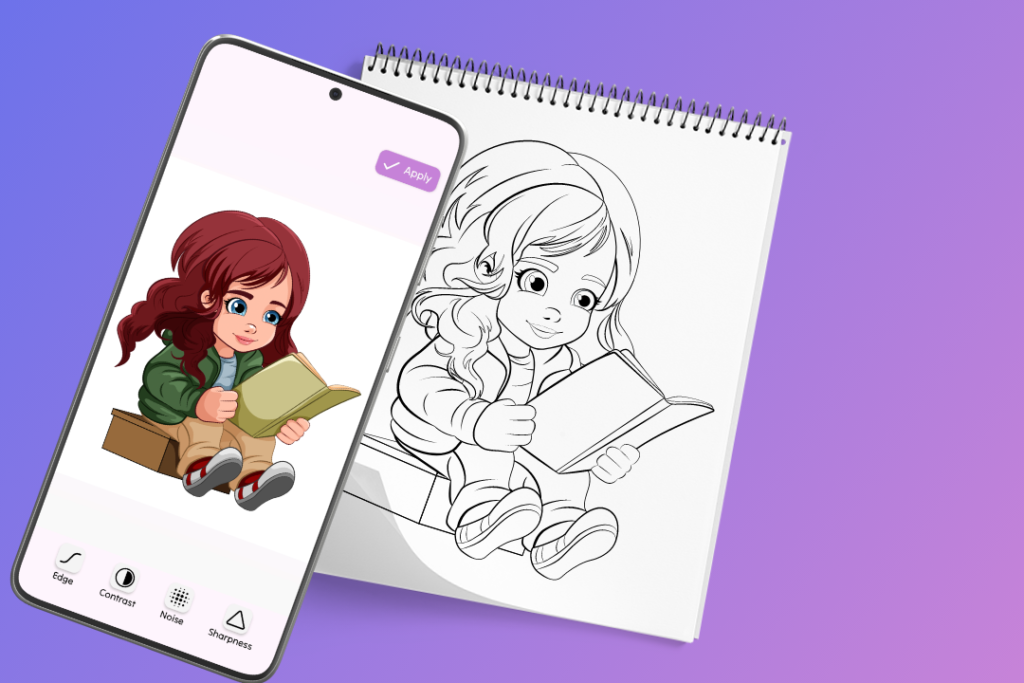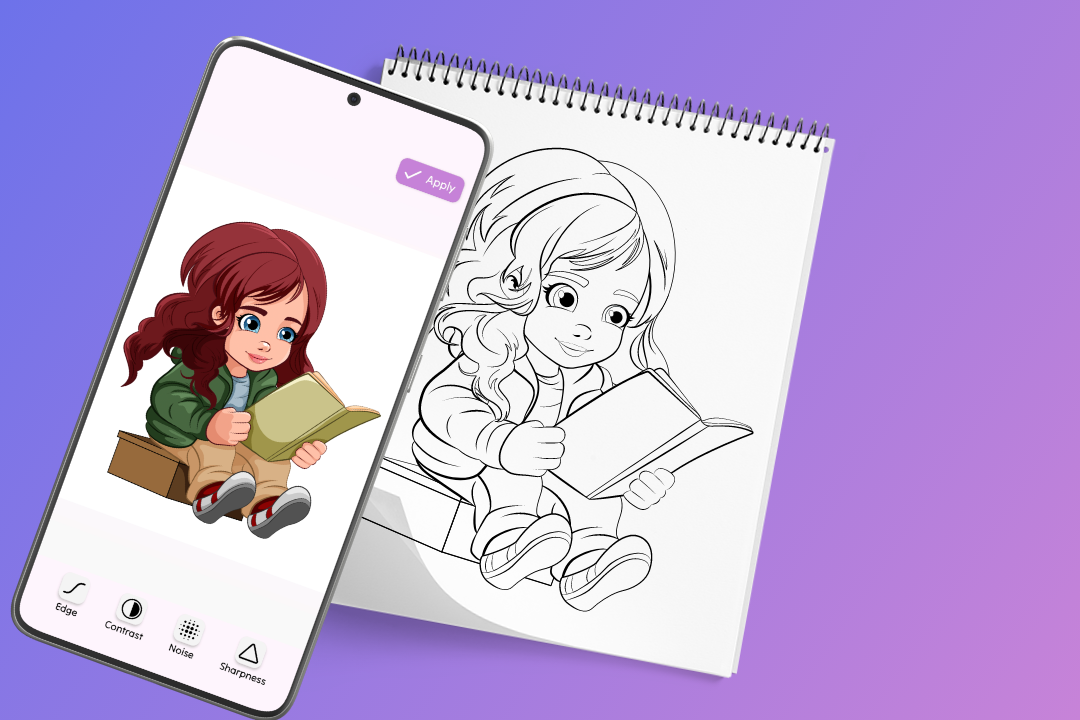
- Exploring AR Drawing Basics
- Top Features of AR Drawing Apps
- Step-by-Step Guides for Beginners
- Pros and Cons of Popular Apps
- Understanding App Ratings and Reviews
- Privacy and Data Safety in AR Apps
- Choosing the Right App Platform
- Final Remarks
- Frequently Asked Questions
In the realm of digital art, finding the best AR drawing apps can be a game-changer. These innovative tools blend creativity with technology, offering endless possibilities for artists and enthusiasts alike. With a rich history dating back to the early 1960s, augmented reality has revolutionized how we interact with art. Today, these apps provide a unique platform to unleash your imagination and create stunning artworks in a virtual environment. Dive into this exciting world where traditional art meets cutting-edge technology.
Exploring AR Drawing Basics
AR Technology
Augmented Reality (AR) in drawing apps overlays digital elements onto the real world through a device’s camera. This technology allows for interactive and immersive ar drawing experiences.
Enhancing Traditional Drawing
AR enhances the traditional drawing experience by providing artists with new dimensions to explore. It bridges the gap between physical and digital art, offering unique ways to create and interact with artworks.
Tools and Techniques
In AR drawing apps, various drawing tools such as brushes, pencils, and blending options are available. Artists can experiment with different styles like vector drawings, pixel art, or even 3D creations on virtual canvases.
Top Features of AR Drawing Apps
Interactive Elements
AR drawing apps offer interactive elements like 3D models, animations, and special effects that bring drawings to life. Users can experiment with various tools to create dynamic and engaging artwork.
Real-Time Collaboration
Enabling real-time collaboration is a standout feature of AR drawing apps, allowing multiple users to work on the same project simultaneously. This fosters creativity and teamwork, making it ideal for group projects or art classes.
Sharing Options
AR drawing apps provide seamless sharing options, allowing users to showcase their creations with others effortlessly. Whether it’s through social media platforms or direct messaging, sharing artwork becomes quick and convenient.
In these apps, the integration of features such as 3D modeling tools, animation capabilities, and real-time collaboration elevates the traditional drawing experience. Users can unleash their creativity in ways not possible with conventional art tools. The ability to share creations instantly adds a layer of connectivity among artists worldwide.
Step-by-Step Guides for Beginners
Interface Basics
When starting with an AR drawing app, familiarize yourself with the user interface. Look for tools like brushes, colors, and erasers.
Tool Selection
To create your first AR masterpiece, begin by selecting a tool from the wide range available. Experiment with different brushes and effects.
Creating Your Artwork
Once you’ve chosen your tool, start drawing on a blank canvas or over an existing image. Use simple shapes and lines to get comfortable.
Navigating Templates
Some AR drawing apps offer templates to help beginners get started. Explore these templates to understand different styles and techniques.
Sharing Your Work
After creating your artwork, use the app’s sharing feature to post it on social media or send it to friends. Show off your creativity!
Pros and Cons of Popular Apps
Features Comparison
AR drawing apps offer a range of features for users to create fun and engaging content. Some popular apps provide advanced tools for precise drawing, while others focus on simplicity and ease of use. Users can explore different brushes, colors, and effects to enhance their creations.
Device Compatibility
When choosing an AR drawing app, it’s essential to consider compatibility across devices. Certain apps may work seamlessly on both iOS and Android platforms, ensuring a wider user base. Compatibility with various styluses or input devices can further enhance the drawing experience.
Pricing Models
The pricing models of AR drawing apps vary widely, with some offering free versions alongside premium subscriptions or one-time purchases. Users need to weigh the benefits of upgrading to the pro version against the cost involved. In-app purchases for additional features or content can also impact the overall value proposition.
Understanding App Ratings and Reviews
Interpretation Tips
When exploring AR drawing apps, pay attention to app ratings and reviews. These are valuable insights from users that can guide your decision-making process. Look for patterns in feedback to gauge the app’s performance.
Consider both positive and negative comments. Positive reviews often highlight features that users love, while negative ones point out areas of improvement. By analyzing these, you can understand the strengths and weaknesses of each app.
Importance of Updates
Regular updates indicate a developer’s commitment to enhancing their app. These updates may introduce new features, fix bugs, or improve overall performance. Apps with frequent updates tend to offer a better user experience compared to those that are rarely updated.
Customer Support and Community Engagement
Good customer support is crucial for addressing user concerns promptly. Apps with responsive support teams tend to have higher ratings as they prioritize user satisfaction. Active community engagement fosters a sense of belonging among users, leading to positive reviews and recommendations.
Privacy and Data Safety in AR Apps
Privacy Practices
AR drawing apps vary in their privacy practices, with some collecting minimal data for functionality while others may gather more information. Users should carefully review the privacy policies of these apps to understand what data is being collected and how it is being used.
It’s essential to be cautious about granting permissions such as access to the camera, microphone, or location when using AR drawing apps. Users should only provide necessary permissions required for the app to function properly and consider limiting access to sensitive data whenever possible.
Data Protection Measures
Reputable AR drawing apps often implement industry-standard encryption methods to secure user data. This ensures that personal information shared within the app remains confidential and protected from unauthorized access.
Regularly updating AR drawing apps is crucial as developers frequently release patches and updates that address security vulnerabilities. By staying up-to-date with the latest versions, users can benefit from enhanced security features and improved data protection protocols.
Choosing the Right App Platform
Device Compatibility
When selecting an AR drawing app, consider your mobile device’s operating system for compatibility. Ensure the chosen app platform supports your device to access all features seamlessly.
Popular Platforms
Explore well-known platforms like the iOS App Store and Google Play Store for a wide range of AR drawing programs. Specific AR app marketplaces offer unique features tailored to augmented reality enthusiasts.
Criteria for Selection
Evaluate apps based on factors such as content variety, developer reputation, and update frequency. Opt for platforms that provide a diverse selection of AR tools with customizable settings and pressure sensitivity options.
Final Remarks
Now that you’ve delved into the world of AR drawing apps, you’re equipped with the knowledge to make informed decisions. From mastering the basics to understanding app ratings and privacy concerns, you’ve gained insights that will guide you towards selecting the perfect app for your needs. Remember to prioritize features that align with your creative goals and always prioritize safety when sharing data online.
As you embark on your AR drawing journey, keep exploring new apps, experimenting with different features, and honing your skills. The possibilities in the realm of AR creativity are endless, so don’t hesitate to push your boundaries and unleash your artistic potential. Stay updated on the latest developments in AR technology, and most importantly, have fun creating remarkable digital art!
Frequently Asked Questions
What are the key benefits of using AR drawing apps?
AR drawing apps offer a unique and interactive way to unleash your creativity by allowing you to create digital art in real-world environments. They provide tools for enhancing artistic skills, fostering imagination, and enabling immersive experiences.
How can beginners get started with AR drawing apps?
Beginners can start by exploring tutorials provided within the app or online resources. It’s essential to familiarize yourself with basic features like brush tools, color palettes, and layers. Practice simple designs before moving on to more complex creations.
Are there privacy concerns related to using AR drawing apps?
Privacy is crucial when using any app. Ensure that the AR drawing app you choose has a clear privacy policy regarding data collection and usage. Be cautious about granting unnecessary permissions and consider opting for apps from reputable developers.
Can I find free AR drawing apps with quality features?
Yes, many free AR drawing apps offer a range of quality features suitable for various skill levels. Explore app stores or websites that curate such applications based on user reviews and ratings to find a suitable option without breaking the bank.
How do I select the best platform for downloading AR drawing apps?
Choose platforms like official app stores (e.g., Apple App Store, Google Play Store) or trusted websites recommended by tech experts. Verify developer information, read user reviews, check update frequency, and ensure compatibility with your device before downloading an AR drawing app.
